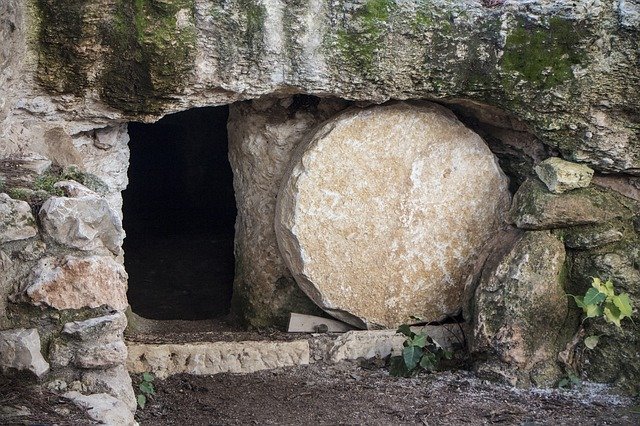This Sunday we remember the most important event in all of history: the resurrection of Jesus Christ from the dead. No matter how many times we’ve celebrated this incredible event, we can never do so enough, for it has eternal implications for all people.
As I mentioned in last week’s column, the blood trail that began in the Garden of Eden with Adam’s sin led all the way to Jesus’ cross, but no farther. The same is true of Jesus’ tomb regarding the hopelessness and finality of death.
Before Jesus exited His burial chamber on that bright morning, all humanity lived under the certainty and permanence of death. Although Jesus had raised Lazarus and a few others during His ministry, all knew that even those individuals would die again and remain imprisoned by death’s impenetrable bars, forged by human sin.
But early on that Day of Firstfruits, Jesus came back to life and not only left His tomb behind, but death itself! He was alive forevermore and He promised to raise all who believed in Him to that same everlasting life.
In fact, Jesus assures us in John 5:28-29 that everyone will be raised to live forever in one of two places. Jesus’ resurrection impacts every human soul in that each person will be raised to life.
Some have used the metaphor of metamorphosis to explain Jesus going into the grave as a caterpillar goes into a cocoon, only to emerge as a brilliant butterfly days later. Although the linen wrappings He left behind may resemble a chrysalis, a key difference is that Jesus was actually dead as opposed to an insect that continues to live throughout the process.
Jesus rose from the dead and afterwards He could move about even more freely than a butterfly. He appeared suddenly to encourage and instruct the disciples on different occasions and in various locations. Although they all doubted His resurrection initially, His physical appearances to them convinced them otherwise and they went out and boldly proclaimed the Good News that Jesus had conquered death, even under threat of their own.
Peter Marshall, writing in Mr. Jones, Meet the Master, asks a riveting question. “Why would (the disciples) persist in a lie, if every time they insisted it was true, they were driving nails into their own coffins?” Indeed, ten of those eleven remaining disciples were martyred for unreservedly proclaiming Jesus’ resurrection and the other one died a prisoner because of it.
The fact that Jesus’ disciples went from fearfully running away in Gethsemane to boldly proclaiming Jesus’ resurrection just a short while later is powerful evidence that this was not a hoax, a lie, or a misunderstanding. They preached the resurrection openly and under great danger of personal harm. Marshall again writes, “There is no “In Memoriam” note in the narratives. After the death of Christ, every page is filled with the sense of the “abiding and empowering presence of Christ.””
Praise God, that abiding and empowering presence of Jesus it still available to all today who believe and trust in Him. As we examine the evidence and cast our vote in favor of this eternity changing event, the Holy Spirit begins to reveal more and more of God to us.
The supreme joy for Christians, aside from a personal relationship with God Himself, is knowing that we shall rise again along with our believing loved ones and will be able to enjoy God’s presence along with theirs throughout all eternity. Jesus was raised on the Feast of Firstfruits to demonstrate that the full harvest of resurrection was yet to come!
As we celebrate Jesus’ resurrection this Sunday, let us ponder anew what this miracle of all miracles truly means for all people and let us worship the One who conquered death for us.
Resurrection Blessings, George
